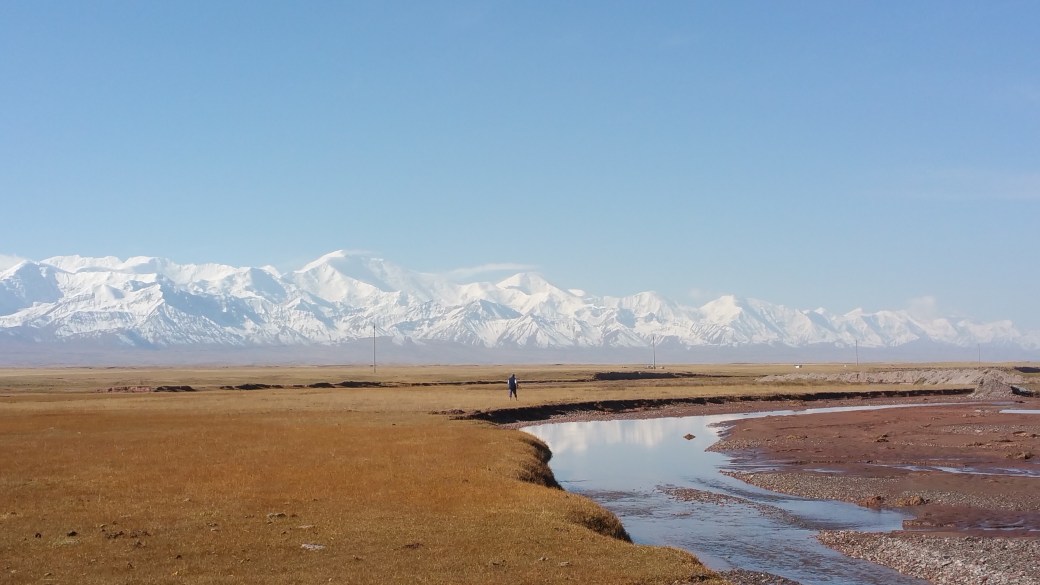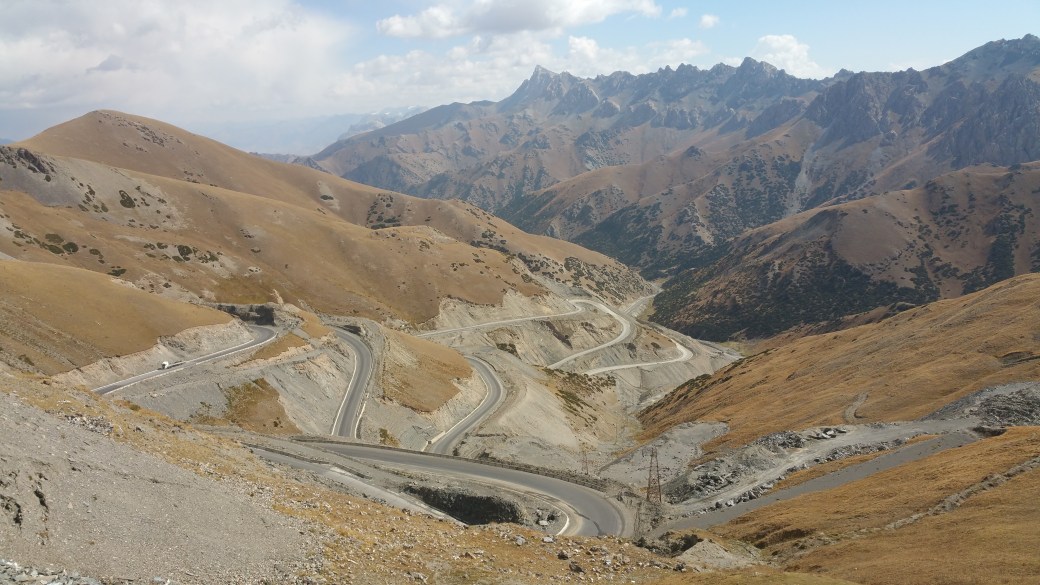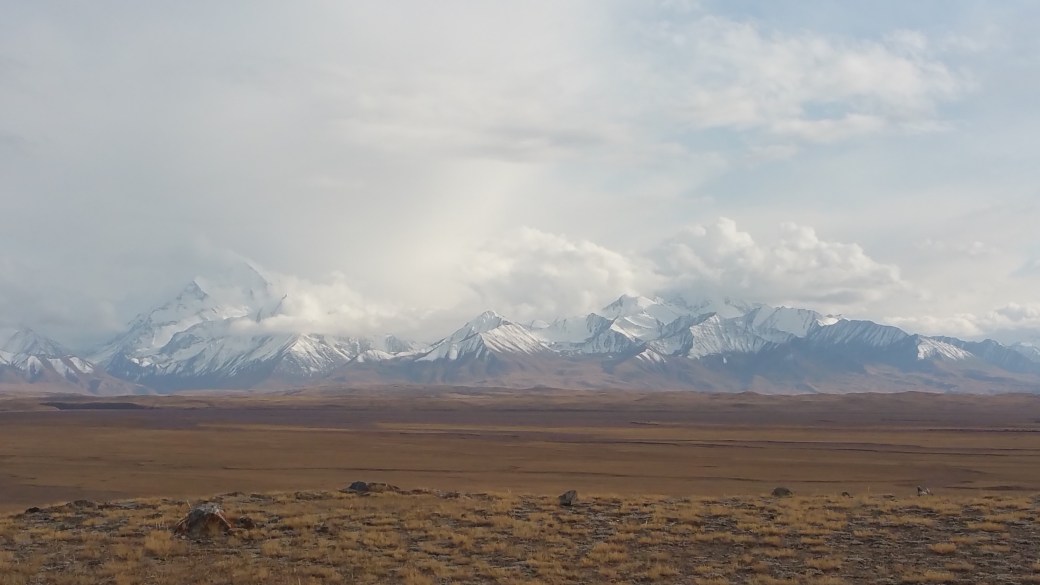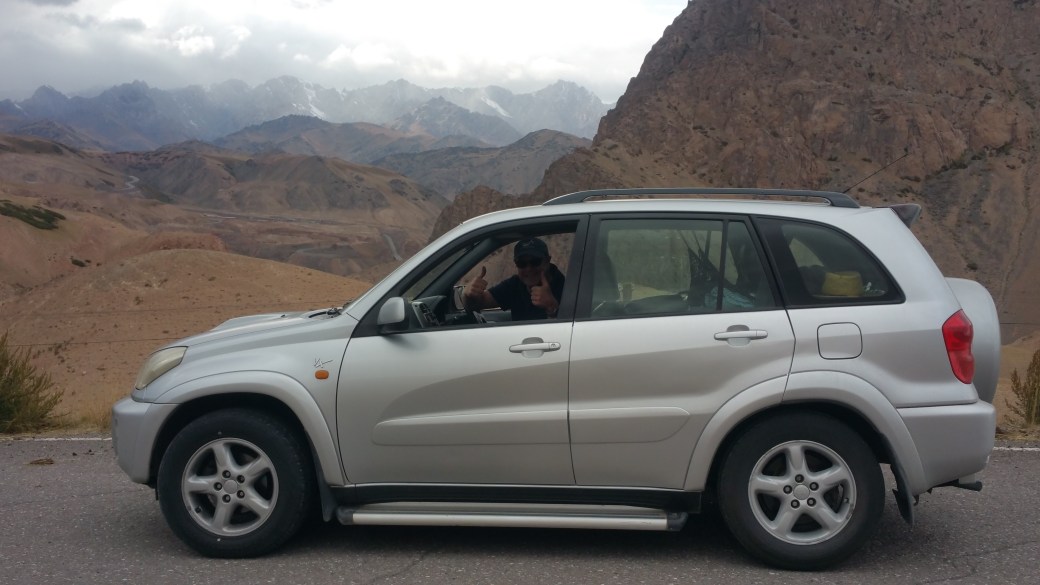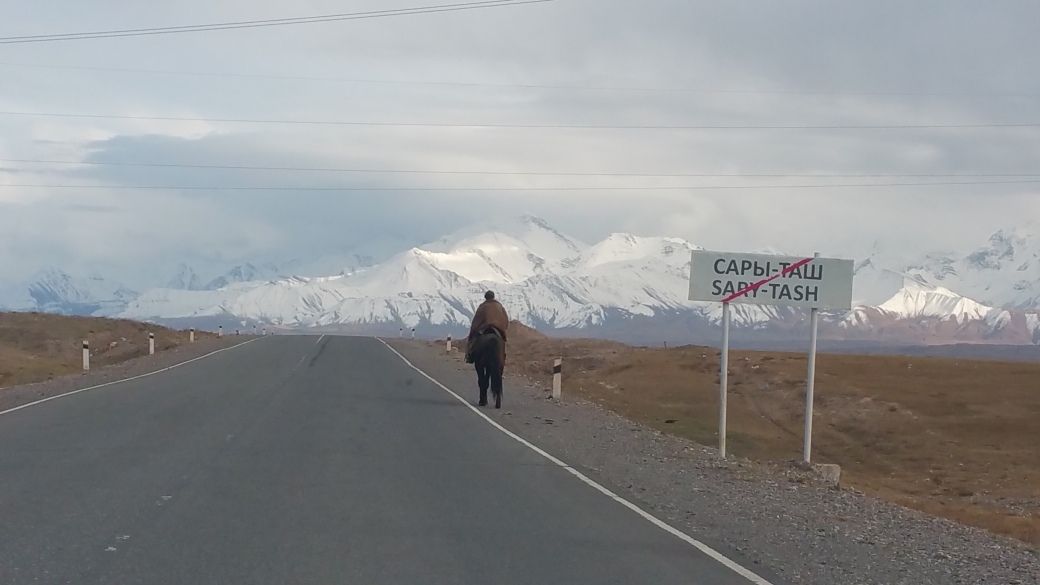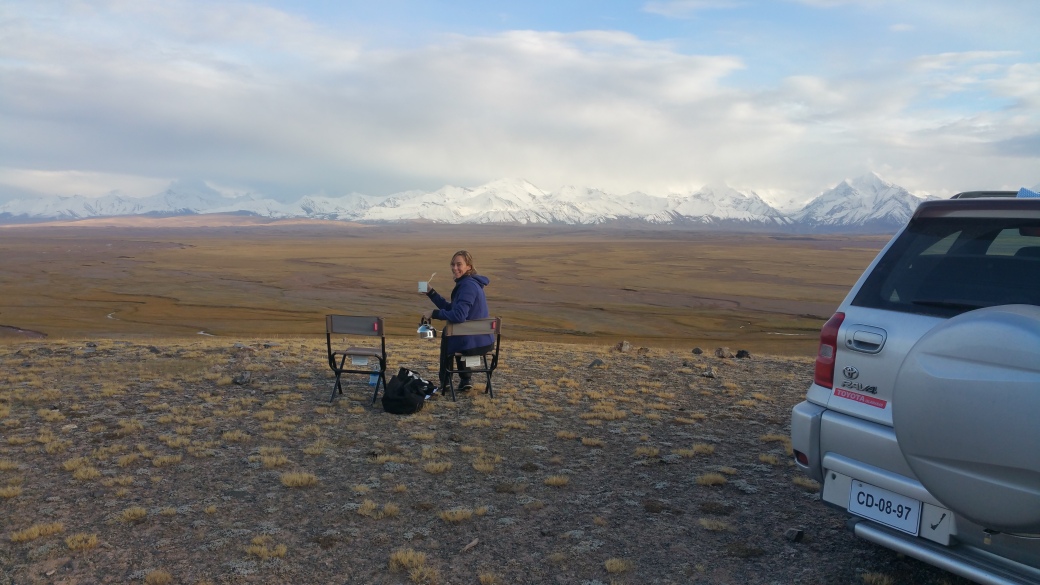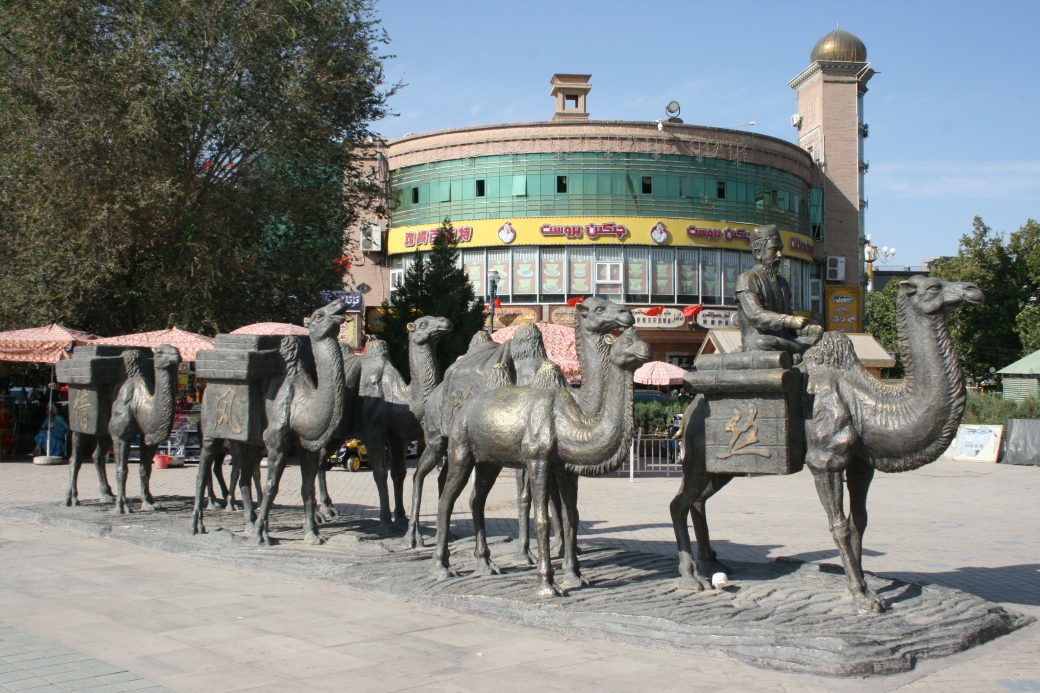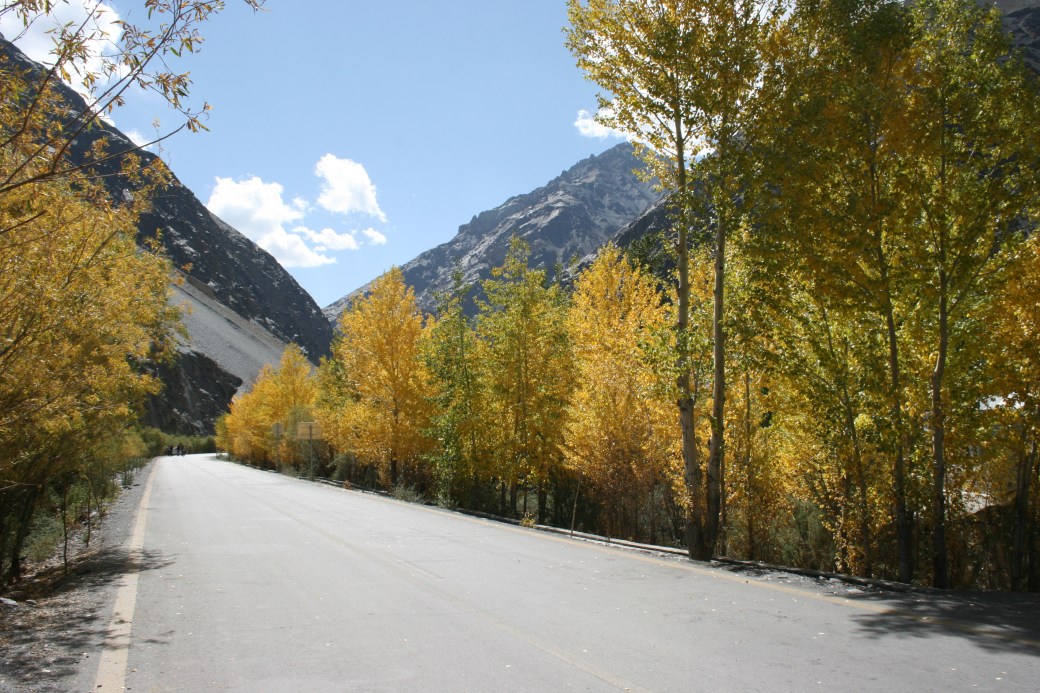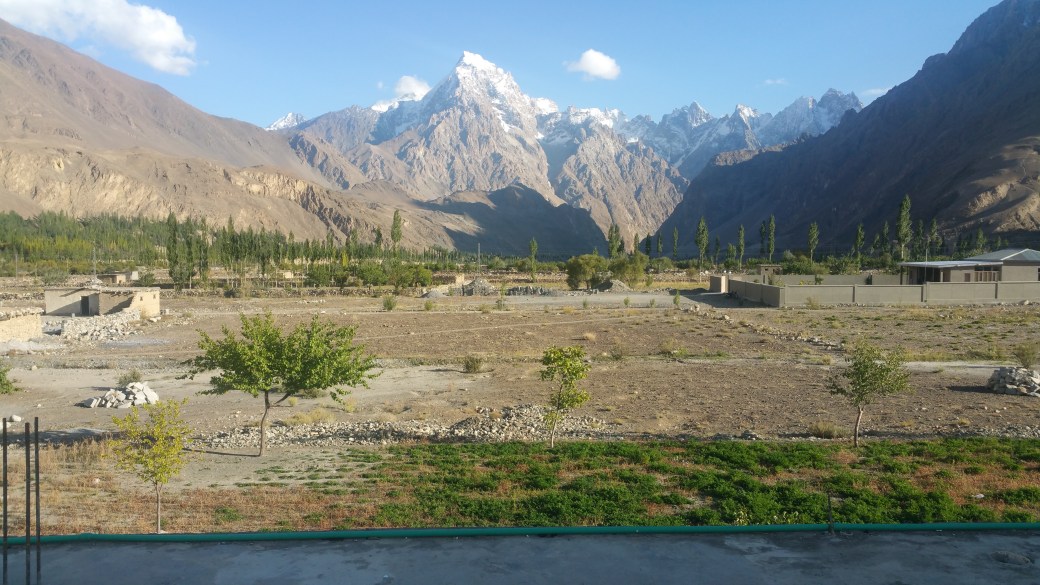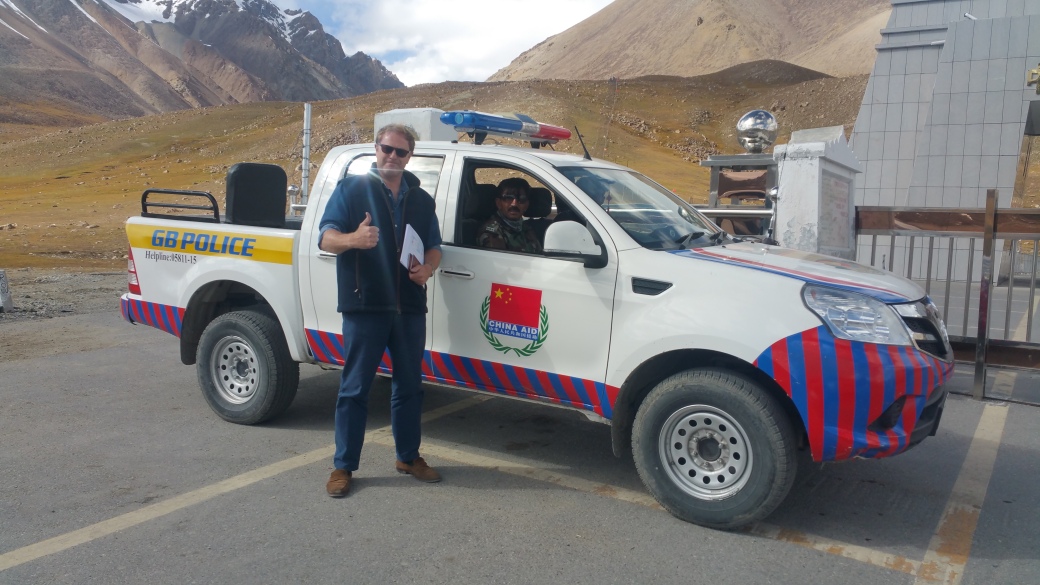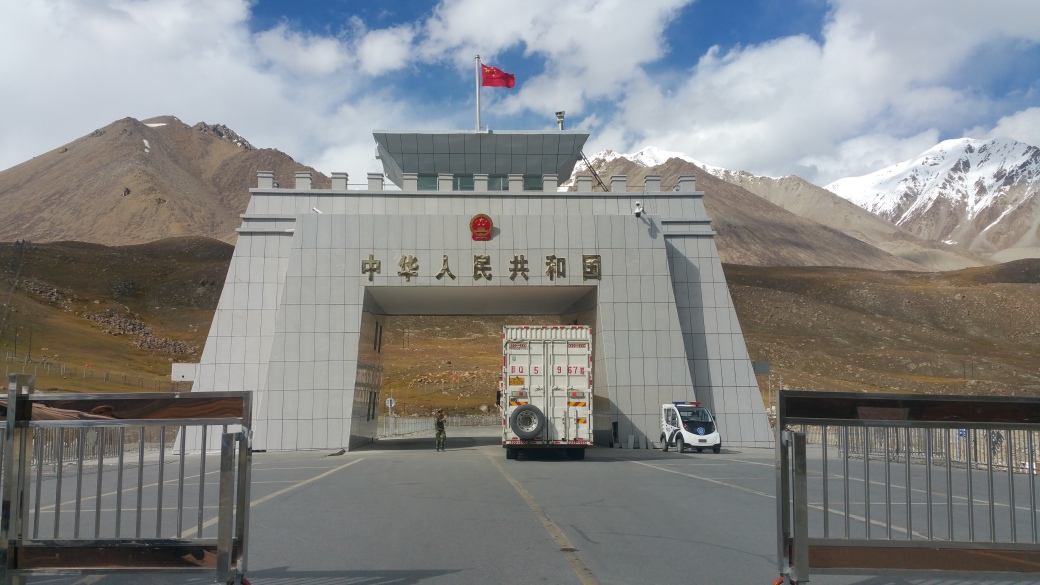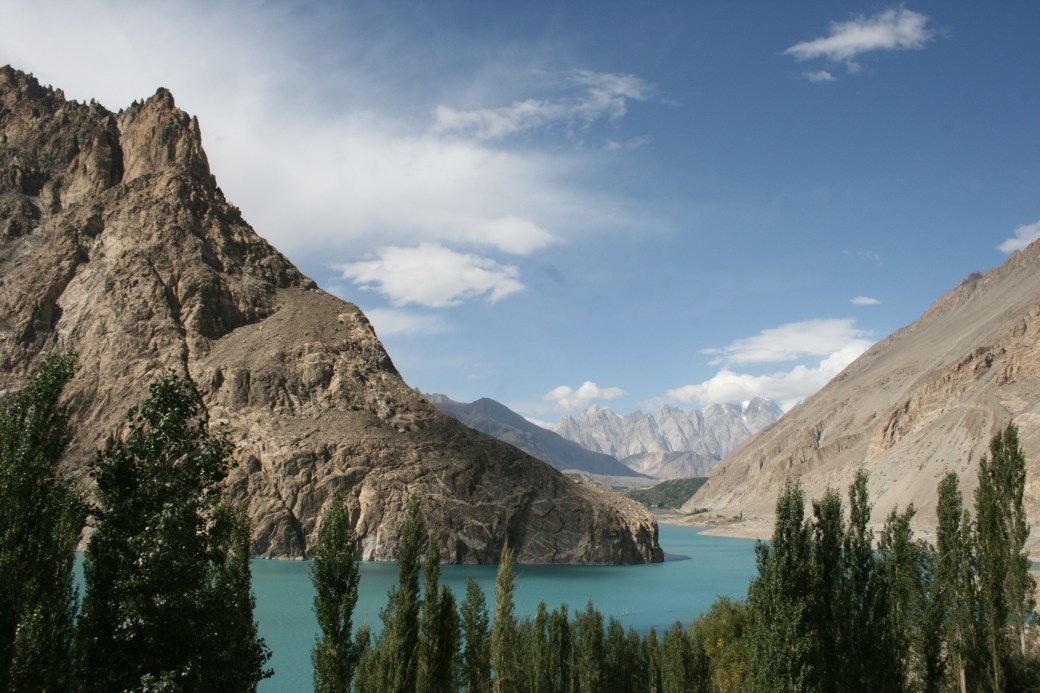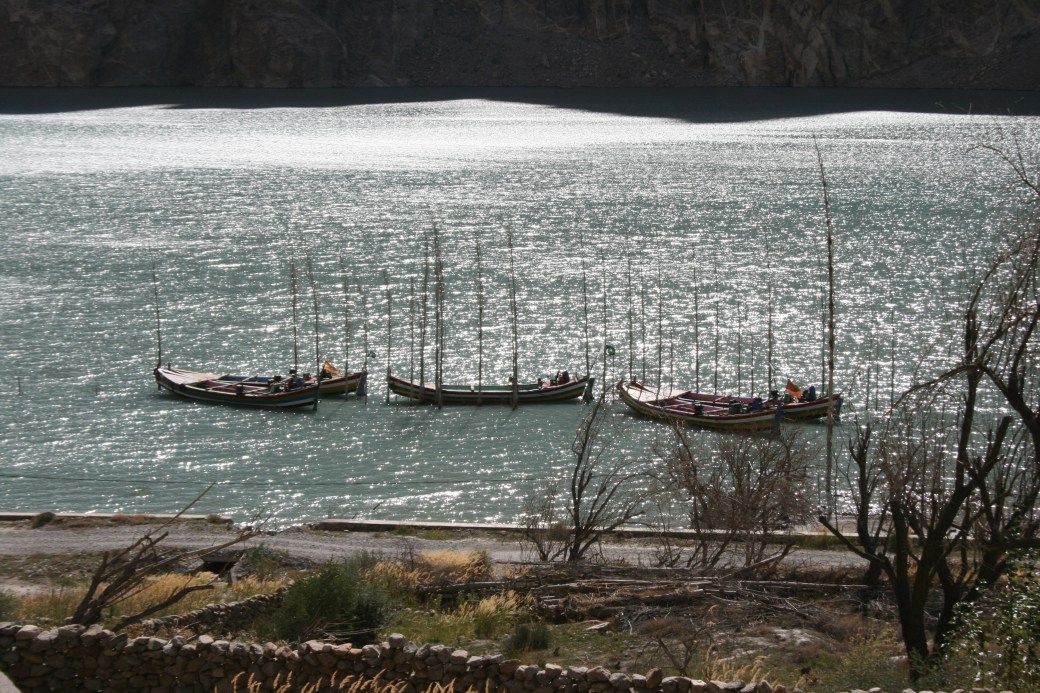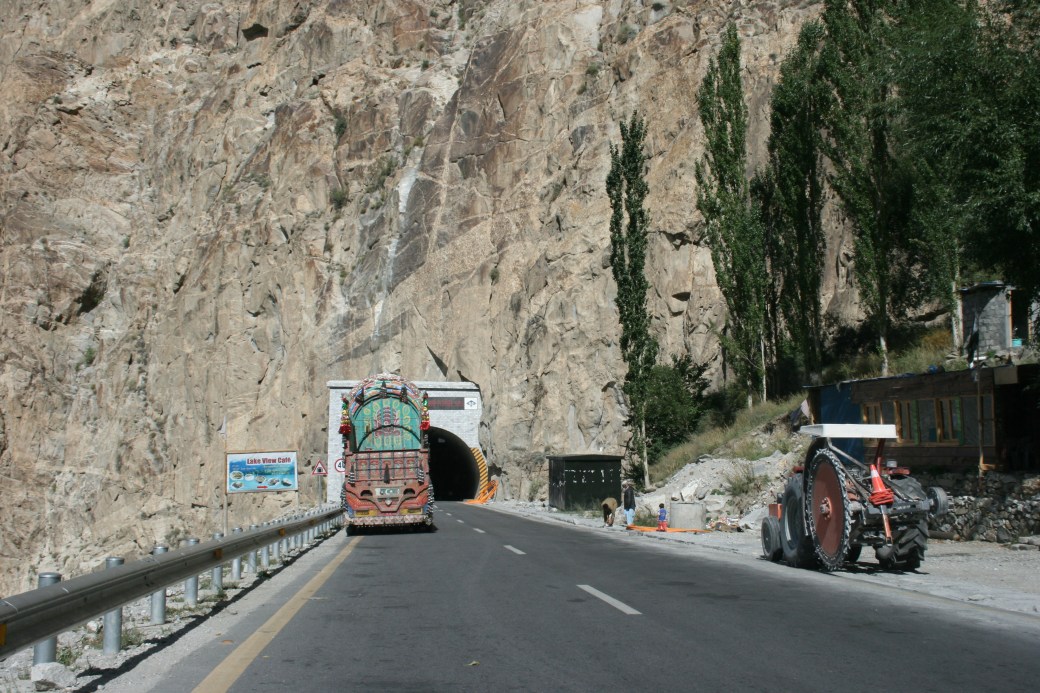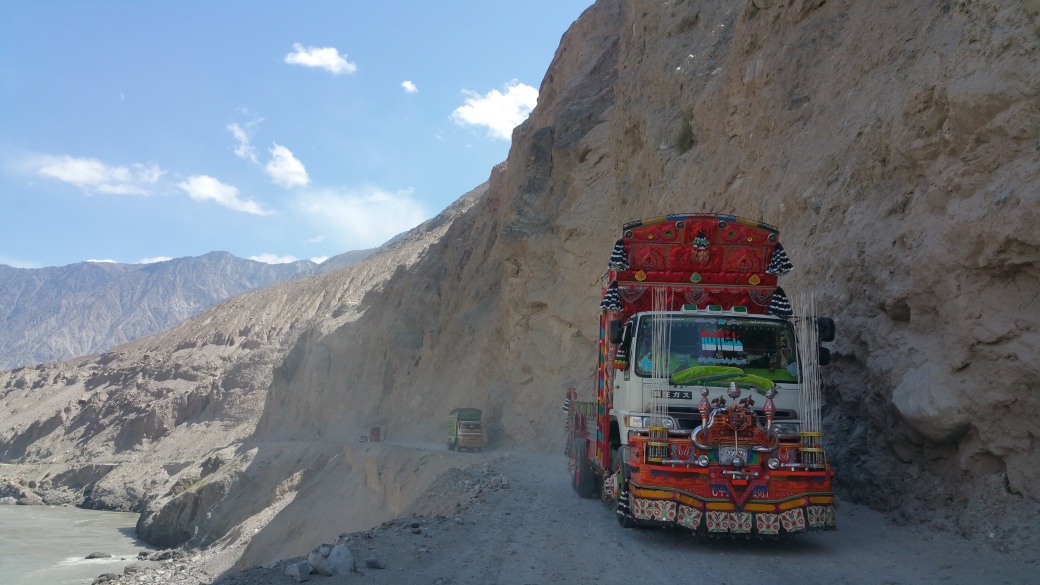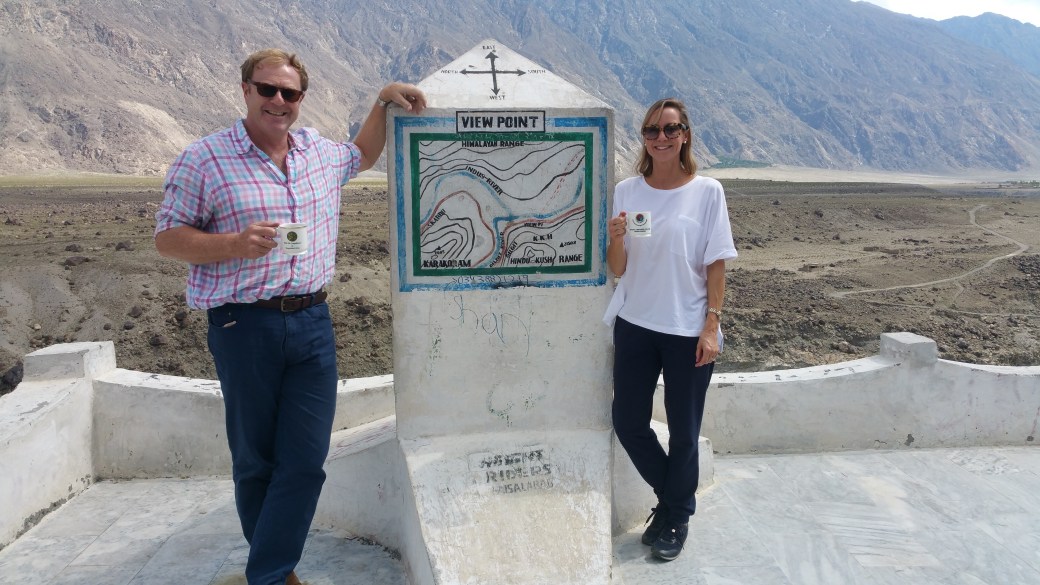Distance: 111 miles – Travelling time: 4 hours (including boarder crossing of 1 hour 15 mins) – Temperature: 16 – 26°C
Another border successfully negotiated: we entered country #4
The morning start was a little challenging with us both having succumbed to something we ate the night before (it definitely wasn’t the pints 11% ABV local beer, I had had Stella but someone else went native!) we set off for the border expecting to have to go through the unload/load of the car as we had at the Chinese border, with the added complication of bringing in a variety of prophylactic prescription medicine which is not allowed in Uzbekistan without permission. To circumvent this we had had scripts issued by a GP in Islamabad before we left and stamped for approval by the Uzbek Embassy, but you just never know. On paper we look like a pair of hypochondriacs with anti-inflammatories, anti-biotics, anti-histamines, etc, just in case . . As it was we arrived at a rather down at heel border post, Murray had shaved, put on his best shirt and cleanest trousers, armed with a superior attitude, Diplomatic passports, a brief case and files of paperwork we were waved through after very little interruption and just a few forms to fill!
While we waited I had to marvel at the sniffer dogs working at the inspection point. They were the first pure bread dogs we had seen in a while, a yellow lab and an Alsatian, both looking superbly fit and healthy and working keenly. They were handled impressively and with obvious care. Thumbs up to the Uzbek dog handlers.
Onwards to the Fergana Valley – the land of silk production and ikat weaving. The one sanctioned shopping stop for me. Well, it is the Silk Road after all!
The roads were pretty bumpy but community development in this part of Uzbekistan is markedly more sophisticated than its neighbour and looks not unlike rural northern France in places with houses of painted render and large metal gates enclosing courtyards. The police, clad in a fetching and noticeable teal green, positioned at regular intervals along the roads, are friendly and very agreeable with the wave of a Diplomatic passport and mention of Sir Alex Fergusson!
The Fergana valley opened up immediately into a wide flat basin stretching for hundreds of miles but fringed by various mountain ranges, some just visible. It was easy to imagine the relief of ancient silk route traders as they descended from the harsh mountain areas on to this fertile plain. Of note today is the choice of transport; a dilapidated but somewhat pleasing to see Lada held together with all manner of strings, bolts and tape, or the bright shiny new white Chevrolet cars, almost without exception, apart from the tormenting little Daewoo minivan taxis that sweep and swerve to a halt without notice to pick up people on the road side.
The scenery was less impressive than the mountains but cultivation was extensive with fields and fields of cotton, sunflowers, mulberry and fruit trees and maize, with all the roads lines with poplar trees.
We were stopped at the Hotel Asia in Fergana for the night, and beforehand shopped at the reputed Yodgorlik Silk Factory – an oasis of creativity but calm and sympathetically laid out – in Margilan for traditional Uzbek ikat fabric.
We met a most delightful man who managed the outfit whom, it transpired, had spent two years at the Royal College of Art, not just learning but imparting his knowledge of the art form of resistance dying and weaving the beautiful silk and cotton fabrics. It was a fascinating process producing wonderful ‘tethered clouds’ (if my translation is any where near close) of patterned fabric. We then took stock in readiness for our push to Tashkent the next day.
The Yodgorlik Silk Factory, Margilan
Entering Fergana at sunset































